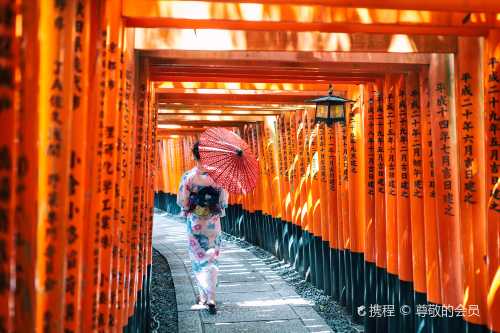Just came back from an unforgettable trip to Osaka! Exploring the colorful streets of Dotonbori, visiting the historic Osaka Castle, and catching the sunset from Umeda Sky Building were absolute highlights. Stayed at LinHouse J 101 Homestay Shin-imamiya Osaka — perfectly located above Namba Station, making travel super easy! Osaka’s street food culture is next-level — takoyaki and okonomiyaki are a must-try! Don’t miss a side trip to Kyoto and Nara especially if you’re a culture lover! Can’t wait to visit again. Osaka’s energy is so contagious! #TravelTips: Get an ICOCA or SUICA card for smooth travel around Kansai. #FoodieTip: Head to Kuromon Ichiba Market for fresh seafood and authentic street eats. #Hashtags: #Osaka #VisitJapan #Dotonbori #OsakaCastle #kyototrip #narapark #UmedaSkyBuilding #TravelJapan #ExploreOsaka #FoodieTravel #KuromonMarket #saganoromantictrain #Takoyaki #Okonomiyaki #JapanTrip #WanderlustJapan
zazamj
Popular Trip Moments
Strolling Through Petals and Philosophy: Kyoto’s Philosopher’s Path | Spring Serenity at Kochidani Amida-ji Temple | Chasing the Cherry Blossom Season in Kansai | Kyoto & Nara One-Day Tour Guide: The Essence of Kansai | Jonangu Shrine: The Hidden Aesthetic of Kyoto's Southern District 🏯 | Arashiyama Sakura Guide: Discover the Hidden Cherry Blossom Gems of Kyoto's Sagano 🌸✨ | Kyoto Myoken-ji Temple: A Nichiren Buddhist Temple Amidst the Hustle and Bustle ⛩️🌸 | Kyoto Ninnaji Temple | 2025 Omuro Flower Festival Cherry Blossom Guide 🌸⛩️ | Kyoto Hidden Cherry Blossom Gem - Takenaka Inari Shrine 🌸🚶♀️ | Kyoto by Night: A Hidden Gem at Kiyamachi | Kyoto’s Late Cherry Blossom Hidden Gem – Ninna-ji Temple’s Spring Five-Storied Pagoda | Hirano Shrine: Kyoto’s Timeless Cherry Blossom Celebration | A Hidden Tunnel of Blossoms: Kyoto’s Secret Sakura Shrine | Whispers of Spring: Sakura Serenity at Amatsu Shrine | Arashiyama in Bloom: Kyoto’s Most Scenic Sakura Escape | Philosopher’s Path in Bloom: Kyoto’s Most Serene Sakura Stroll | Maruyama Park: Kyoto's Most Lively Cherry Blossom Party | Last Chance for Sakura! Kyoto's Tō-ji Temple | Kinkaku-ji: A Must-See Temple in Kyoto | Honmanji Temple’s Timeless Sakura | Rokusonno Shrine: Kyoto’s Hidden Sakura Sanctuary | Pink cherry blossom hill! Kyoto Arashiyama Cherry Blossom Festival is a must-see for everyone | Sakura Reflections: A Tranquil Cruise Through Fushimi’s Blossoms | Yamato-Bashi Bridge: A Quieter Corner for Kyoto's Springtime Charm | Twilight Petals: Gion Shirakawa’s Hidden Springtime Elegance | Kyoto Hotel Okura | Experience the Ancient Capital in One Stop | Kyoto Park Cherry Blossom Guide: Encounter the Romance of Spring | The Art of Ramen in Kyoto : Sugari | Neon Summer | Fill Your Child's Childhood with Fairy Tales
Trending Travelogues
Recommended Attractions at Popular Destinations
Bangkok attraction near me | Manila attraction near me | Tokyo attraction near me | Taipei attraction near me | Hong Kong attraction near me | Seoul attraction near me | Kuala Lumpur attraction near me | Los Angeles attraction near me | Shanghai attraction near me | New York attraction near me | Shenzhen attraction near me | Osaka attraction near me | Singapore attraction near me | London attraction near me | Guangzhou attraction near me | San Francisco attraction near me | Beijing attraction near me | Macau attraction near me | Bali attraction near me | Jakarta attraction near me | Paris attraction near me | Ho Chi Minh City attraction near me | Istanbul attraction near me | Phuket attraction near me | Chicago attraction near me | Seattle attraction near me | Toronto attraction near me | Orlando attraction near me | Cebu attraction near me | Chiang Mai attraction near me
Popular Restaurants in Kyoto
Gion Maruyama | Gion Matayoshi | Kikunoi Honten | Kyo-Suiran | Nanzenji Junsei | Kinmata | Isshi Souden Nakamura | Kodaiji Wakuden | Kikunoi Roan | Ogata | Sakuragawa | Honwaka Kyoto Honten | Gion Kawakami | KYOTO GION KOME-RYOTEI HACHIDAIME GIHEY | Tagawa | Tempura Yoshikawa | cenci | Pound Kyoto Ekimae | Uosaburo | Yamamoto Menzou | HANA-Kitcho | Shimogamosaryo | Shunai Sasaki | Mitsuyasu | Honke Tankuma Honten | Touzan - Hyatt Regency Kyoto | Kifune Ugenta | Itoh Dining | Mizuki | Teppanyaki Gozanbo
Popular Ranked Lists
Top 4 Best Things to Do in Daxin | Popular Best Things to Do in Lvliang | Popular Luxury Hotels in Paradise Island | Popular Local Restaurants in Baoting | Top 10 Local Restaurants in Kaifeng | Top 10 Local Restaurants in Ningxiang | Popular Luxury Hotels Near East Brunswick | Popular Premium Hotels Near Gorod Novosibirsk | Top 9 Local Restaurants in Ganzhou | Top 5 Best Things to Do in Danzhou | Popular Premium Hotels in Brentwood Bay | Popular Luxury Hotels Near Korcula | Top 10 Local Restaurants in Huidong | Popular Best Things to Do in Suifenhe | Popular Best Things to Do in Jixi | Popular Luxury Hotels in Ramatuelle | Popular Best Things to Do in Shaoyang | Popular Luxury Hotels Near Phuc Yen | Top 9 Local Restaurants in Hengshui | Popular Luxury Hotels Near Sandakan Division | Top 5 Local Restaurants in Qujing | Top 8 Local Restaurants in Xuyi | Top 10 Local Restaurants in Yangjiang | Popular Luxury Hotels Near Fell Lapland | Top 5 Best Things to Do in Yongzhou | Top 4 Local Restaurants in Mangshi | Popular Best Things to Do in Dongtai | Top 4 Best Things to Do in Changji Prefecture | Popular Luxury Hotels Near Palakkad | Popular Local Restaurants in Wuyi
Payment Methods
Our Partners
Copyright © 2025 Trip.com Travel Singapore Pte. Ltd. All rights reserved
Site Operator: Trip.com Travel Singapore Pte. Ltd.
Site Operator: Trip.com Travel Singapore Pte. Ltd.

























